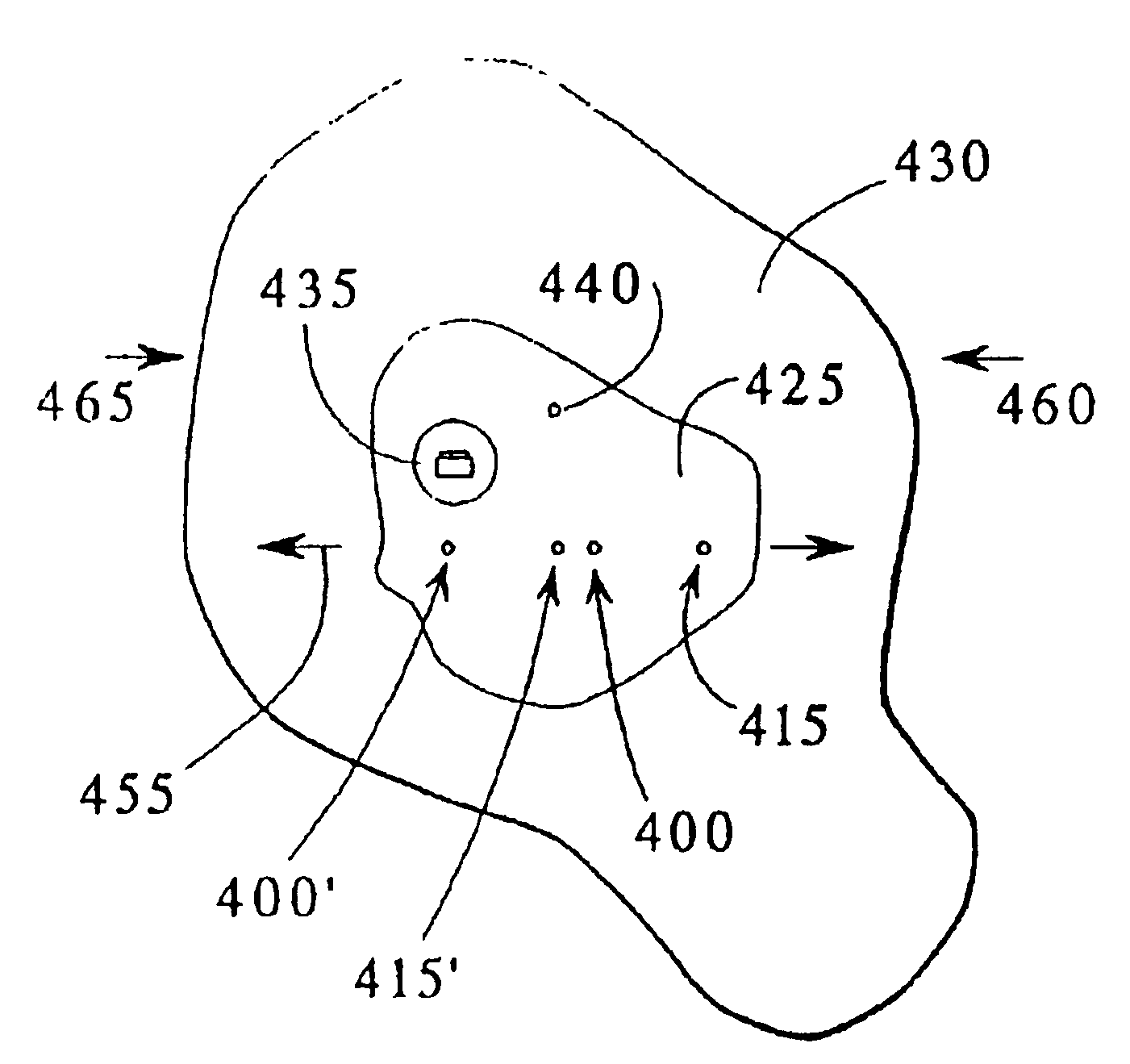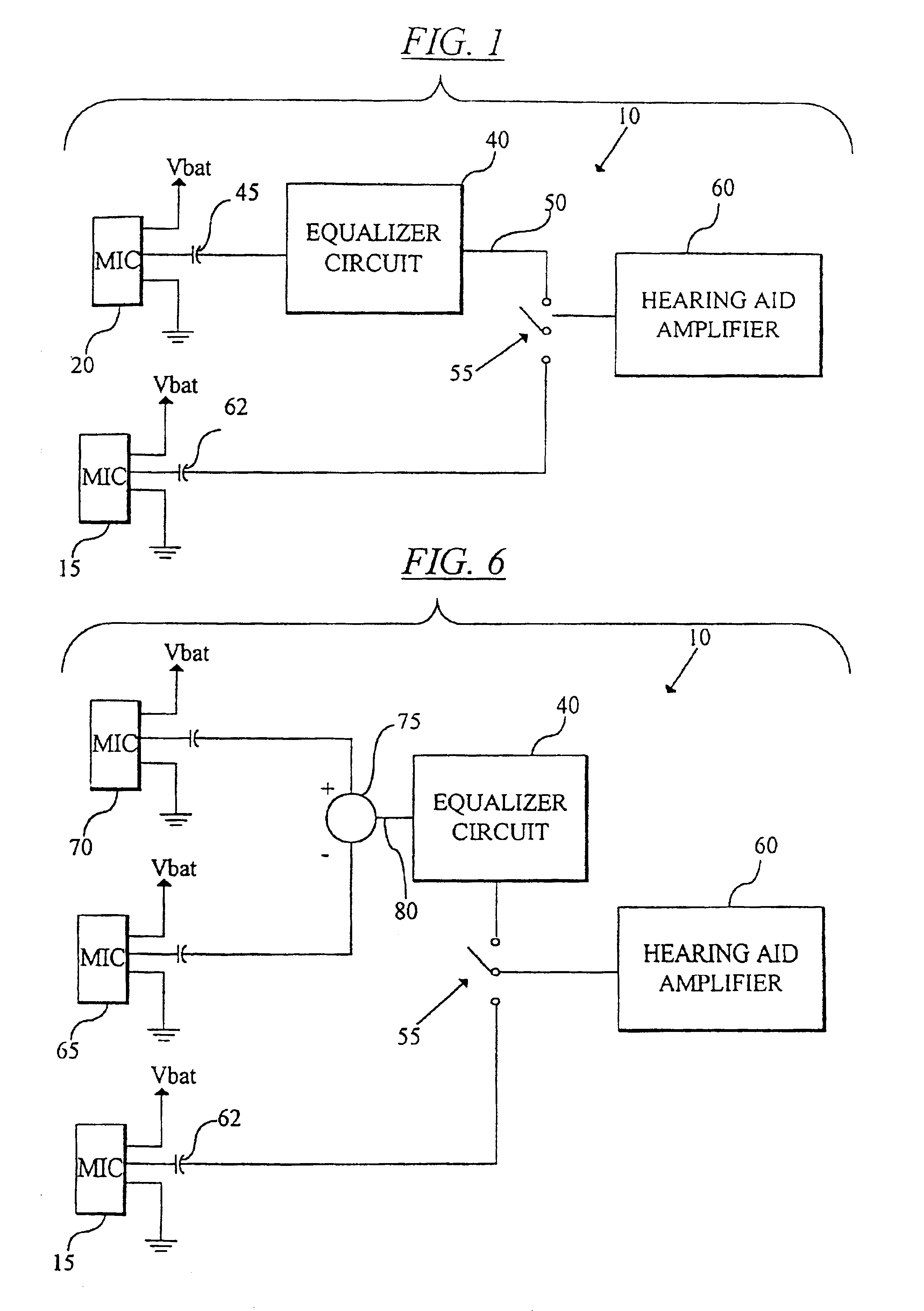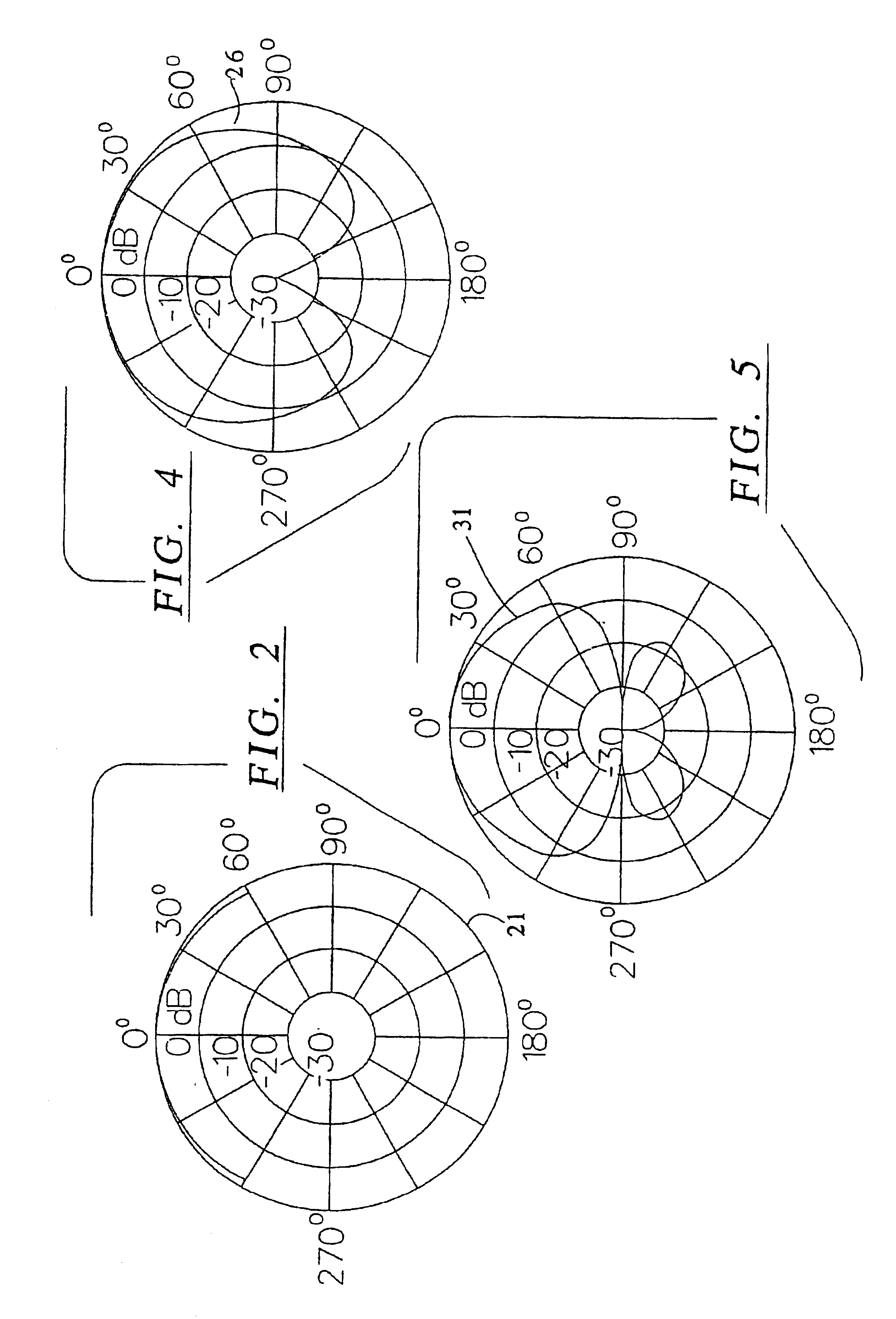Hearing aid having second order directional response
a hearing aid and directional response technology, applied in the field of microphone systems, can solve the problems of large research expenditure, difficult to understand conversational speech in background noise, severe signal-to-noise ratio problems, etc., and achieve the effect of increasing sensitivity and increasing hearing aid performan
- Summary
- Abstract
- Description
- Claims
- Application Information
AI Technical Summary
Benefits of technology
Problems solved by technology
Method used
Image
Examples
Embodiment Construction
[0036]A hearing aid apparatus constructed in accordance with one embodiment of the invention is shown generally at 10 of FIG. 1. As illustrated, the hearing aid apparatus 10 utilizes both an omnidirectional microphone 15 and a directional microphone 20 of at least the first order. Each of the microphones 15,20 is used to convert sound waves into electrical output signals corresponding to the sound waves.
[0037]The free space directional response of a typical omnidirectional microphone is shown by line 21 in FIG. 2 while the corresponding frequency response of such a microphone is shown by line 25 of FIG. 3. The directional and frequency response of a typical omnidirectional microphone make it quite suitable for use in low noise environments when it is desirable to hear sound from all directions. Such an omnidirectional microphone is particularly suited for listening to a music concert or the like.
[0038]The free space directional response of one type of a first order directional micro...
PUM
 Login to View More
Login to View More Abstract
Description
Claims
Application Information
 Login to View More
Login to View More - R&D
- Intellectual Property
- Life Sciences
- Materials
- Tech Scout
- Unparalleled Data Quality
- Higher Quality Content
- 60% Fewer Hallucinations
Browse by: Latest US Patents, China's latest patents, Technical Efficacy Thesaurus, Application Domain, Technology Topic, Popular Technical Reports.
© 2025 PatSnap. All rights reserved.Legal|Privacy policy|Modern Slavery Act Transparency Statement|Sitemap|About US| Contact US: help@patsnap.com



